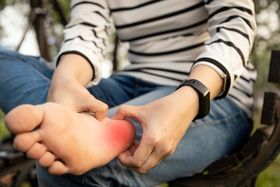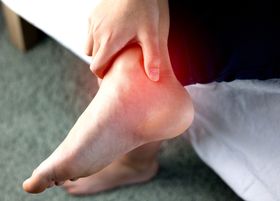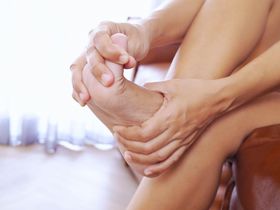Cycling With Plantar Fasciitis: Tips From a Physical Therapist
Many activities can worsen plantar fasciitis. Cycling, however, can help with heel pain when done correctly. Learn how with these cycling tips from the experts.
Updated February 17, 2023.
Plantar fasciitis is one of the leading causes of heel pain. It is the tightening of the ligamentous band that connects the toes to the heel. Often, it occurs because of overuse, causing micro-tears in the plantar fascia, which results in heel pain. The pain is generally dull and aching, worse after prolonged sitting or lying down, and aggravated by the first morning steps.
When plantar fasciitis occurs, it can affect your ability to perform your regular activities of daily living. It can also reduce your quality of life and affect your fitness level. While there are a number of things to avoid with plantar fasciitis, staying active helps manage the condition—and cycling is key to doing this.
Cycling With Plantar Fasciitis: FAQs
Can Cycling Cause Plantar Fasciitis?
No, cycling does not cause plantar fasciitis when done right. Biking (or cycling) is a low-impact exercise that requires minimal repetitive forceful contact between your feet and the ground. In fact, cycling provides a ready solution to the problem of movement and maintaining fitness with plantar fasciitis.
Should You Cycle With Plantar Fasciitis?
While cycling doesn't cause plantar fasciitis, it can aggravate the condition without the proper precautions. The incorrect choice of footwear, bike fit, and riding technique can worsen the symptoms of plantar fasciitis. This, in turn, could potentially lead to secondary complications resulting from plantar fasciitis in severe cases. Cycling shoe insoles for plantar fasciitis are incredibly useful in terms of helping you cycle safely with the condition.
Is Cycling Good for Plantar Fasciitis?
Yes, when done correctly, cycling can help you stay fit, even with plantar fasciitis. As long as you learn the proper technique and cycle without discomfort, it is a good option for maintaining your activity level despite heel pain.
» Want an expert to treat your plantar fasciitis? Contact Upstep for a pair of Plantar Fasciitis Custom Orthotics today
How to Cycle With Plantar Fasciitis
There are several precautions to ensure that cycling is beneficial rather than a source of even greater pain. So if you choose to cycle, first consider the following:
- Adjust your saddle height If your saddle height is too low, you'll place more pressure on your heel, which can contribute to or aggravate plantar fasciitis. Adjust the saddle height to ensure that your legs are almost fully extended (80–90%) during the downswing while riding.
- Wear orthotics for more support While your heel won't contact the pedal, you must keep the arch and the rest of the foot supported. Orthotic insoles can help with heel pain significantly, and cycling orthotics offer several benefits in this regard. You can also opt for a bike pedal with proper heel support, which can be an excellent way to support feet affected by plantar fasciitis.
- Wear appropriate shoes Opt for shoes that do not pinch your toes. Also, go for shoes that hold your heel firmly. If you have it any other way, you will place undue stress on your feet as you attempt to pedal. Wearing good quality and proper fitting shoes can help you minimize this.
- Stretch beforehand It's always a good idea to stretch before exercising. Stretching warms up your muscles and can also help treat residual pain. You're much less likely to experience pain after cycling if you take the time to stretch beforehand.
- Use proper technique Ideally, the best position keeps your upper body at a 45-degree angle to your lower body, with your hands bent at a 90-degree angle. Otherwise, you may predispose yourself to unnecessary stress and injury.
- Use the right gear Cleats allow for more stability and strength when riding. For those who use bike cleats, ensure they are compatible with your pedals. You'll place more strain on your heels if they aren't, and this can cause plantar fasciitis.
Related Posts
Babafemi Adebajo
How Glucosamine Helps With Plantar Fasciitis
Babafemi Adebajo
7 Best Cycling Shoe Insoles for Plantar Fasciitis
Babafemi Adebajo
Custom Orthotics for Plantar Fasciitis—2024 Review
Babafemi Adebajo
Things to Avoid With Plantar Fasciitis
Babafemi Adebajo
Can Plantar Fasciitis Cause Knee Pain?
Babafemi Adebajo
CBD Cream for Plantar Fasciitis: Does It Help?
Babafemi Adebajo
5 Vitamins That Help With Plantar Fasciitis
Staff Writer
4 Signs Your Plantar Fasciitis Is Healing
Janik Sundstrom









